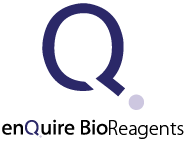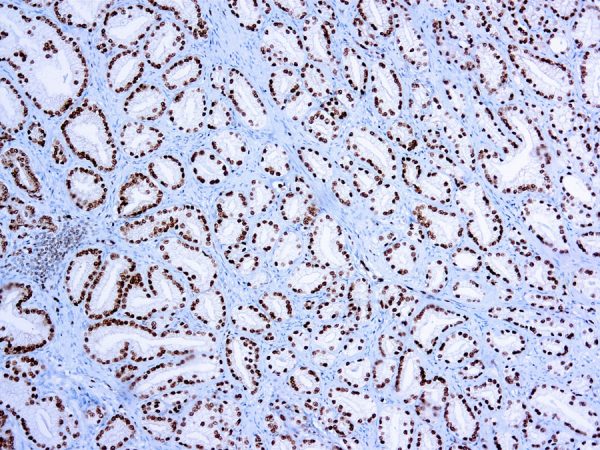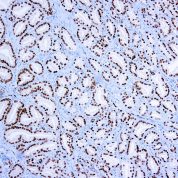Antibody (Suitable for clinical applications)
Sample Type: FFPE Patient Samples.
Tested Applications: IHC. Approved for In Vitro Diagnostic Procedures on FFPE tissues. For tissue collection recommendations, please see datasheet sent with product.
Application Notes
| Specification | Recommendation |
|---|---|
| Recommended Dilution (Conc) | Only Available as Predilute |
| Pretreatment | EDTA Buffer pH 8.0 |
| Incubation Parameters | 30 min at Room Temperature |
Prior to use, inspect vial for the presence of any precipitate or other unusual physical properties. These can indicate that the antibody has degraded and is no longer suitable for patient samples. Please run positive and negative controls simultaneously with all patient samples to account and control for errors in laboratory procedure. Use of methods or materials not recommended by enQuire Bio including change to dilution range and detection system should be routinely validated by the user.
Clonality: Monoclonal
Anti-ERG Antibody Clone: EP111
Host and Isotype: Rabbit Rabbit IgG
Recommended Positive Control Sample: Prostate carcinoma
Cellular Localization of Antibody EP111 Staining: Nuclear
Buffer and Stabilizer: PBS with 1% BSA and 0.05% NaN3
Antibody Concentration: Lot specific. Plese contact tech support for data.
Immunogen: A synthetic peptide corresponding to residues on the C-terminus of the human ERG protein.
Storage Conditions: This antibody should be stored refrigerated (2-8°C). This product should not be used past the expiration date printed on the vial.
ERG Information for Pathologists
Summary:
Transcription factor highly specific and 50% sensitive for prostatic adenocarcinoma. Detect via FISH or immunohistochemistry. Terminology V-ets erythroblastosis virus E26 oncogen homologue. ETS family transcription factor present at 22q12.Notable Clinical Features:
TMPRSS2-ERG fusion may be an early event in prostate cancer (Arch Pathol Lab Med 2009;133:1033), although marked intrafocal heterogeneity exists (Mod Pathol 2013;26:106). ERG does not appear to have prognostic value in prostate adenocarcinoma after radical prostatectomy (Mod Pathol 2012;25:471) or in high grade PIN (BJU Int 2012;110:E751). ERG rearrangement is more common in peripheral zone prostatic adenocarcinomas, but also present in 12% of transition zone cancers (Mod Pathol 2010;23:1499). Similar TMPRSS2-ERG gene fusion status between primary and metastatic prostate cancers (Hum Pathol 2012;43:644). Quantification of T2:ERG in postdigital rectal examination urine is specific for prostate cancer (Am J Clin Pathol 2012;138:685).Common Uses By Pathologists:
TMPRSS2-ERG fusion is one of most common translocations for any malignancy. 50% sensitive and highly specific for prostate adenocarcinoma, usually by FISH (Am J Surg Pathol 2007;31:882). Lower frequency (28%) in patients from Japan (Mod Pathol 2010;23:1492) and Korea (Korean J Pathol 2012;46:423). ERG immunohistochemistry (nuclear stain) accurately assesses presence of TMPRSS2-ERG fusion protein. Simpler and less costly than FISH (Am J Surg Pathol 2011;35:1014).Limitations and Warranty
This antibody is manufactured in accordance with clinical good manufacturing practices in an ISO13485:2016 certified production facility. It is intended for multiple uses including in vitro diagnostic use and research use only applications. Please see vial label for expiration date. We strive to always deliver antibodies with a shelf life of at least two years.






There are no reviews yet.